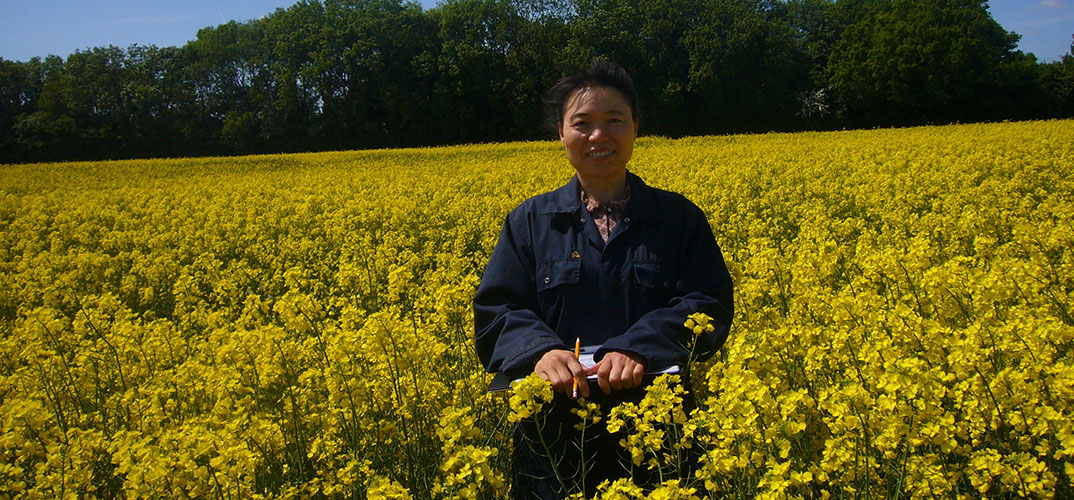United Kingdom
September 17, 2019

New research into crop disease resistance in oilseed rape by a research team at the University of Hertfordshire has been published online this week by journal PLOS ONE.
Protecting crops from catastrophic yield losses caused by plant pathogens is a major goal of agriculture to safeguard global food security in response to growing concerns about food shortages and climate change.
Use of crop resistance is one of the most economical methods of controlling crop diseases. Phoma stem canker, also known as blackleg disease, is a disease responsible for annual losses worth more than £1,000 million in oilseed rape crops across the world. The disease is caused by the fungal pathogen Leptosphaeria maculans. The pathogen first infects the leaves of oilseed rape in autumn (October/November), causing phoma leaf spot lesions, then grows symptomlessly along the leaf midrib and petiole to reach the stem, causing damaging phoma stem cankers in spring/summer (April-July) that result in yield losses.
Currently, selection of cultivars with quantitative resistance has relied on assessment of crop disease severity at the end of growing season. It has been difficult to investigate quantitative resistance against the growth of this pathogen in leaves and petioles or in stems before the appearance of stem canker symptoms under field crop conditions due to the long period of symptomless growth after initial leaf infection.
Being able to measure resistance against this pathogen in young oilseed rape plants will not only accelerate the process of breeding new durable resistant oilseed rape varieties, but will also save money for the industry by reducing the costs of field experiments for breeders and reducing the use of fungicides to control this disease for farmers.
This is the first research, by a team of researchers led by the University of Hertfordshire, to demonstrate that the measurement of resistance against the growth of the phoma stem canker pathogen L. maculans in the leaves of young plants in controlled environments can be used to detect resistance in adult plants under field conditions.
The paper ‘Oilseed rape (Brassica napus) resistance to growth of Leptosphaeria maculans in leaves of young plants contributes to quantitative resistance in stems of adult plants’, is based on results four controlled environment experiments and 11 field experiments in collaboration with scientists at INRA, France, and has just been published online by PLOS ONE.
“Oilseed rape is an important break crop in arable rotation systems in the UK. Effective disease control to make this crop profitable is very challenging. There has been a heavy reliance on fungicides to control this disease but with recent withdrawal some of the most effective fungicides; development of oilseed crop cultivars with good resistance to the disease is become evermore important. Traditionally, selection of oilseed rape resistant cultivars relied on end of season field assessments of disease severity on stems, which is 5-6 months after initial leaf infection in the previous autumn.
“Due to the long period of symptomless growth, it has been difficult to breed resistant cultivars. Our study investigates whether resistance can be assessed in young oilseed rape plants. If so, it will not only accelerate the process of breeding oilseed rape crops for resistance but will also save money by reducing the number of pre-breeding lines needed for testing in field experiments, based on results of disease resistance assessments in young plants. Results of our research show that there are good correlations between resistance detected in young plants in controlled environment experiments and resistance detected in adult plants in field experiments. This suggests that resistance can be assessed in young oilseed rape plants.”
Yongju Huang
Reader in Plant Pathology at the University of Hertfordshire